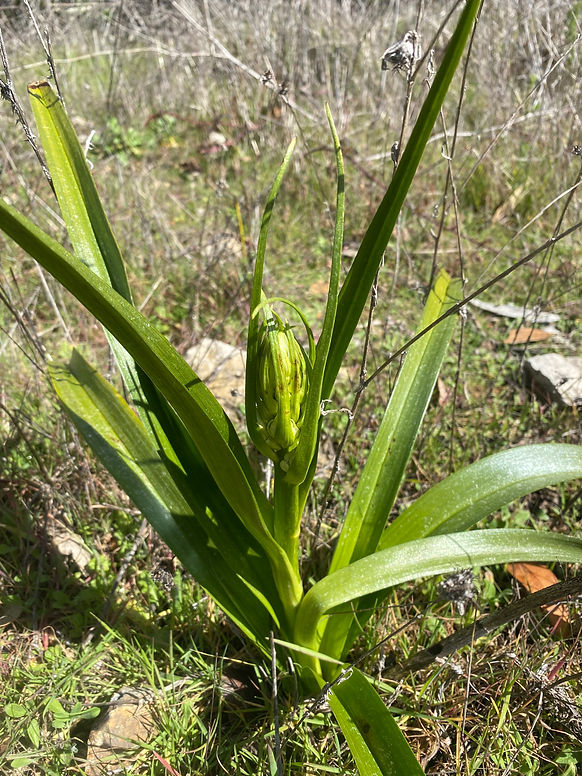
California Native Plant Society
in collaboration with East Bay Municipal Utility District
Toxicodendron fremontii details
Text by May Chen
Fremont’s Star Lily, Toxicoscordion fremontii (family Melanthiaceae), a perennial herb, is a west coast native that produces an attractive spike of cream colored flowers from an underground bulb. Together with several related plants, it is also called death camas, since all parts of the plant contains a toxic alkaloid.
Flowers are borne in a branched cluster at the top of a single stem, which may reach 3 feet. Flowers open sequentially from the bottom upwards. The flower is radially symmetrical with 3 sepals and 3 similar petals (together called tepals). Petals are white or cream with conspicuous parallel veins. Each vein ends in a yellow nectary gland. Together the glands form a bright yellow eye near the center of the flower. It is the presence of these distinct glands near the base of the petals that distinguishes the star lilies (family Melanthiaceae) from true lilies. The 6 stamens have long filaments that spread apart slightly from the center of the flower. The single pistil has a superior, three-lobed, green ovary, three tapered styles with blunt stigmas.
It is believed that the toxicity of the plant may extend to the flower nectar, which would represent an ecological filter, limiting the species of insect pollinators that can avail themselves of the plant’s food resources. Pollination is thought to be accomplished by a variety of Syrphid flies and Stratiomyid flies, and solitary Andrenid bees.

